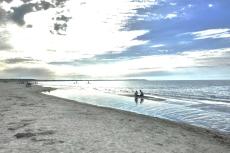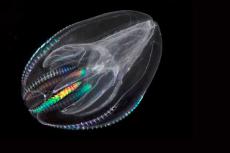Why have Pacific Coast gray whales become shorter?
Gray whales along the Pacific Northwest are shrinking in size, raising critical concerns about their health, reproductive success, and the broader implications for the ecosystem.
Marine scientists from Oregon State University have observed a concerning trend in the body size of gray whales off the Pacific Northwest coast. Since around 2000, these whales have shown a significant decrease in length, raising alarms about their overall health and the state of the ecosystem.
Findings suggest that the whales in the Pacific Coast Feeding Group (PCFG), a subset of about 200 gray whales within the larger Eastern North Pacific (ENP) population of around 14,500, are smaller and have been getting smaller in recent decades. Generally, they are in poorer health, compared to those in the ENP group.
Tracking the subset
From 2016 to 2022, the researchers—who were from the University's Marine Mammal Institute's Geospatial Ecology of Marine Megafauna (GEMM) Lab—deployed drones to measure 130 individual whales in the PCFG. They discovered that fully grown gray whales born after 2000 were expected to be about 1.65 metres shorter than those born before 2000.
This translated into a reduction of more than 13 per cent of their body length.
Dire implications
It is without a doubt that size plays an essential part in an animal’s survival in the wild. “It affects their behaviour, their physiology, their life history, and it has cascading effects for the animals and for the community they’re a part of,” said lead author Enrico Pirotta, a researcher at the University of St. Andrews in Scotland.
A smaller physical size adversely affects reproductive rates and the survival rates of whale calves. It also means lower energy reserves for the whales to recover from injuries.
Food availability
The study had tracked the patterns of the cycles of ”upwelling” and “relaxation” of the ocean environment. These had to be taken into consideration as upwelling swept nutrients from the deeper to shallower regions, while relaxation enabled these nutrients to remain in these regions, leading to the growth of plankton and other small organisms.
These subsequently becomes a food source for PCFG gray whales, which tend to stick close to the shores along the Oregon coast, feeding in the shallower, warmer waters.
The data showed that whale size declined concurrently with changes in the balance between the upwelling and relaxation, Pirotta said.
More research
As the researchers prepare for their ninth field season, they now have many new questions about the implications of the size decline and are determined to uncover more about the environmental factors driving these changes.




























